双线PCC&NTH负载均衡图文教程
1、内网IP设置:
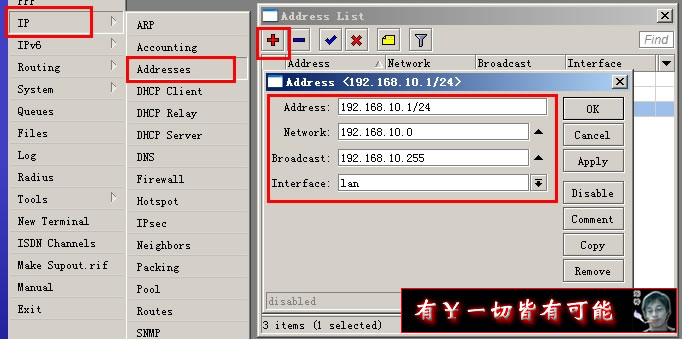
2、添加pppoe


去掉 Add Default Route 我们后期手动进行路由设置。

4、标记 先标记New Connection Mark 名称为1st_conn ,然后用Connection 标记New routing Mark min名称为:1st_route



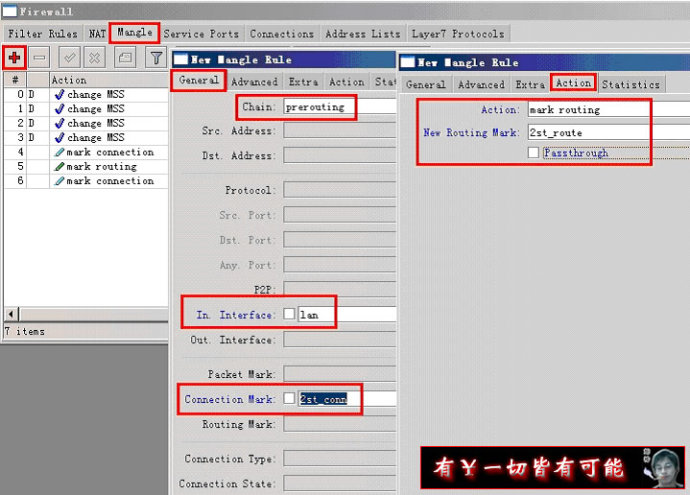
5、设置PCC
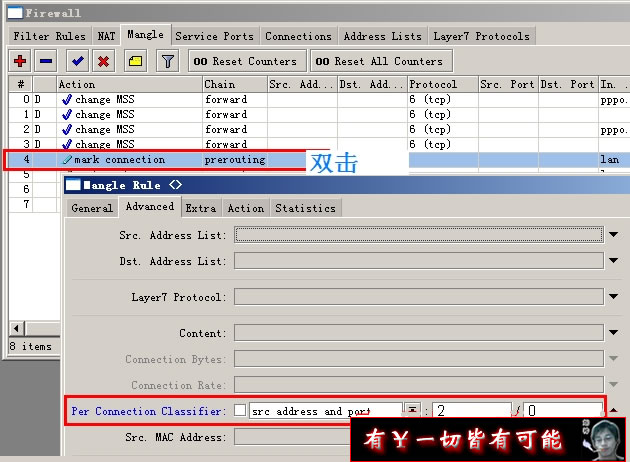
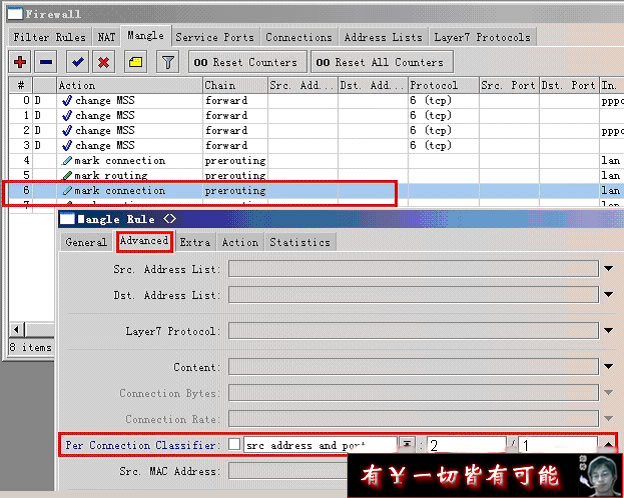
NTH的设置方法:


7、设置备用路由


最终效果图
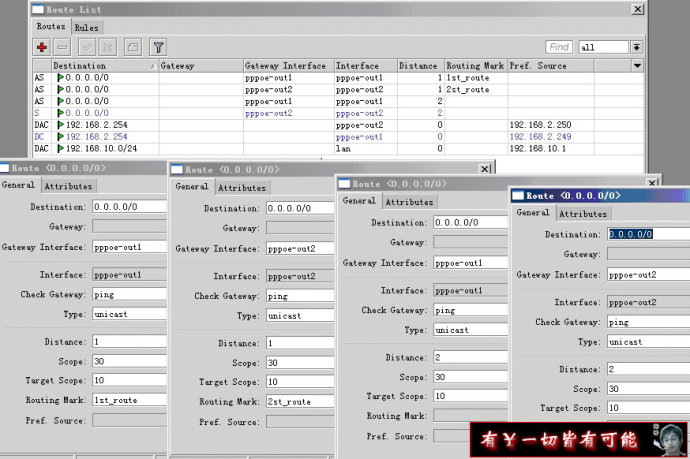
8、伪装设置:


官方 NTH 参数部分 翻译
example: nth=Every,Counter,Packet nth=2,3,0. 2,3,1 2,3,2
divide all packets into groups of three (2+1). The packets will be numbered from 0 to 2. So, a sequence of packets the rule matches looks like: (0 1 2)(0 1 2)(0 1 2)(0 1 2)(0 1 2)...
the first rule will match the first packet in each group ("Packet"=0). The second rule will match the second packet in each group ("Packet"=1) and so on. Each successful match increments the counter. When a value of "Every" is reached, the counter is reset to 0. For this to work, the "Counter" should be the same for all rules (you can pick any value from 0 to 15, IIRC).
翻译内容
例如:NTH=every (计数组),counter(计数器),packet(数据包) NTH=2,3,0; 2,3,1; 2,3,2
把所有为数据包定义为三组(2+1)。所有的数据包将被标上从0到2的数字标记。这样一来,被规则匹配过的数据包的顺序看起来就像(0 1 2)(0 1 2)(0 1 2)(0 1 2)(0 1 2)。。。。这个样子一样。 { 注:上面的这个讲解的只是NTH=2,3,0这个规则。包都是被标记上了从0到2的数字。(0包 1包 2包)由于every设定的值为2.也就是三次,所以计数器重新开始计数[原因在下面],整体看起来的话就是 (0包 1包 2包)(0包 1包 2包)(0包 1包 2包)(0包 1包 2包)...}
第一个规则将把第一个包匹配到每一个("packet"=0)这样的组里。第二个规则将把第二个包匹配到(packet=1)这样的组里,后面的包的匹配规则跟这两个类似。每次成功的匹配都将被增加到计数器里。 当设定的“every”的次数被执行完毕时,计数器被重置为0。计数器的数值在所有的规则里必须保持一致才能正常的运行.(计数器的数值可以是"0-15"中的任何一个数值)
原文内容:
nth (integer,integer: 0..15,integer{0,1}) - match a particular Nth packet received by the rule. One of 16 available counters can be used to count packets
Every - match every Every+1th packet. For example, if Every=1 then the rule matches every 2nd packet
Counter - specifies which counter to use. A counter increments each time the rule containing nth match matches
Packet - match on the given packet number. The value by obvious reasons must be between 0 and Every. If this option is used for a given counter, then there must be at least Every+1 rules with this option, covering all values between 0 and Every inclusively.
翻译内容
NTH(Every:取值范围{整数:无要求,只要是整数就行},Counter:取值范围{整数:0-15中的任意一个数,共16个},Packet:取值范围{整数:0或者1,共2个})--作用:把规则收到的第N个包匹配为一个特殊的包。16个计数器中的任何一个都可以用来统计数据包。
Every 匹配每一个第“Every+1”个通过的数据包。例如:如果Every的值为1,那么匹配的将是每一个“第二个”通的数据包。
Counter 指定你要用的计数器。规则每次统计次数的增量等于NTH匹配次数的值(意思是它每次归0重新计数的同期跟Every设定的值相等,不明白的话看上面的翻译的最后一句) Packet 用数字标记已经统计过的数据包。很明显这个参数的取值是介于0和“Every的值”之间的一个整数。 If this option is used for a given counter, then there must be at least Every+1 rules with this option, covering all values between 0 and Every inclusively(这句话我实在是翻译不好。个人理解的是如果它被用到规则里去的话,那么应用它的规则的总数必须是"every+1",是从0开始计算到“Every的值”)